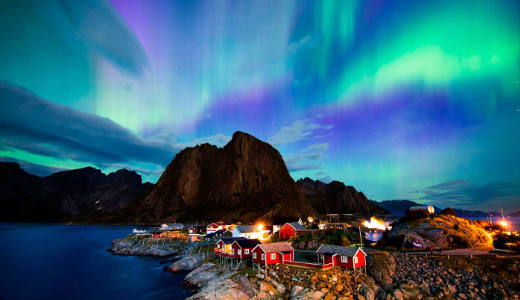The Northern Lights, also known as the Aurora Borealis, are natural light displays predominantly seen in high-latitude regions, like the Arctic and Antarctic. In the UK, particularly in Scotland, northern England, and Northern Ireland, it is possible to witness these lights, though it's rarer compared to locations closer to the Arctic Circle, such as Norway or Iceland.
Visit https://www.walletflights.com today and start planning your cost-effective journey!
1. What Causes the Northern Lights?
The Northern Lights occur when charged particles from the Sun interact with the Earth's magnetic field. These particles are primarily electrons and protons that travel through space due to solar activity, such as solar flares or coronal mass ejections (CME). When these charged particles reach the Earth's atmosphere, they collide with gas molecules, such as oxygen and nitrogen. This collision releases energy in the form of visible light, which we see as the Northern Lights. The specific colors of the aurora depend on which gases are involved:
- Green: Most common color, caused by oxygen at lower altitudes.
- Red: Caused by oxygen at higher altitudes.
- Purple, blue, or pink: Caused by nitrogen molecules.
2. Best Time to See the Northern Lights in the UK
The Northern Lights can be seen in the UK during periods of high solar activity, with optimal viewing typically occurring during the autumn and winter months when nights are longer and skies are darker. The best months for spotting them in the UK are:
- September to March, with the peak months being around December and January.
The reason for this is that the nights are longer and the skies are clearer in winter, increasing the chances of seeing the auroras.
3. Why Do They Appear in the UK?
The Northern Lights are more commonly associated with regions closer to the North Pole, but they can occasionally be seen in the UK, particularly during periods of strong solar activity. The UK lies at a high enough latitude (closer to the Arctic Circle) for the Northern Lights to be visible, though sightings tend to be more common in Scotland and northern regions due to their proximity to the geomagnetic poles.
Geomagnetic storms, which result from the interaction of the solar wind with the Earth's magnetic field, can extend the aurora further south, allowing people in the UK to witness the phenomenon. Stronger geomagnetic storms can push the auroras southward, making them visible even in areas like northern England or Wales.
4. Meaning and Significance of the Northern Lights in the UK
In the UK, the Northern Lights don't have a specific traditional meaning, but throughout history, people in various cultures have assigned mystical or spiritual significance to the auroras. In Norse mythology, they were believed to be the glow of the Valkyries’ armor as they led warriors to Valhalla. Other cultures have associated the lights with omens, spirits, or messages from the gods.
In modern times, the Northern Lights are mostly seen as a beautiful natural phenomenon and are often a bucket-list experience for skywatchers and photographers in the UK. Spotting them is considered rare and special in the UK, as the lights usually require clear skies, minimal light pollution, and increased solar activity.
Advertisement:
Find Budget-Friendly Travel Deals at www.walletflights.com
Planning your next adventure? Discover the most affordable flights, comfortable hotels & cars,
Visit https://www.walletflights.com today and start planning your cost-effective journey!
5. Where Can You See Them in the UK?
The best places in the UK to see the Northern Lights are:
- Scotland: Particularly in areas like the Scottish Highlands, the Isle of Skye, and Orkney.
- Northern Ireland: Coastal areas can provide good views.
- Northern England: While rare, sightings have been reported in Northumberland and other parts of northern England.
- Wales and the southern UK: Much rarer, but strong solar storms have occasionally made the auroras visible here.
To increase your chances, it is best to visit areas with low light pollution and clear skies on nights when geomagnetic activity is high.
.png)



Post a Comment